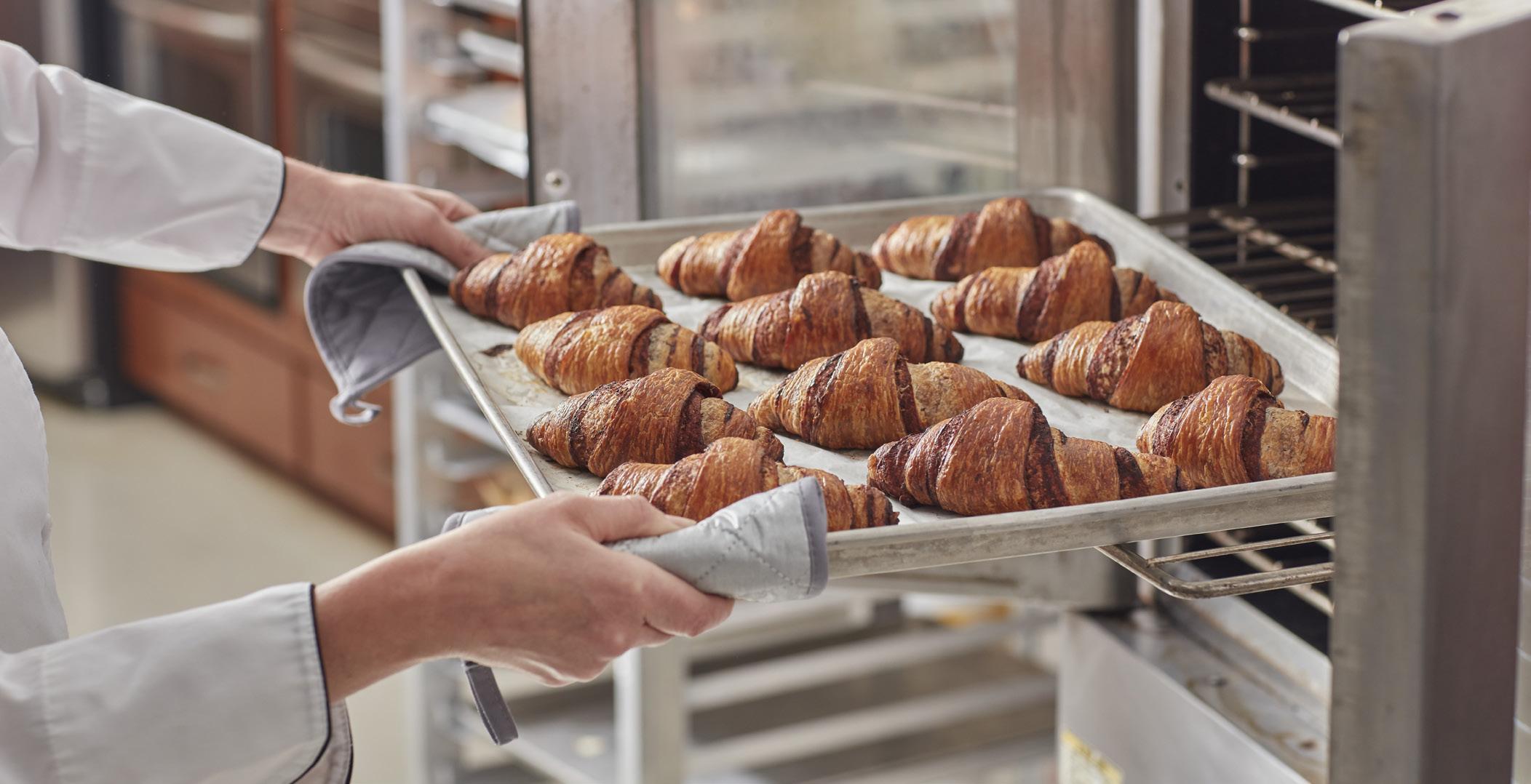
2 minute read
Tradition in transition
BY ANNIE HOLLON
When it comes to breaking down the baking industry into distinct categories, none are quite so broad in scope and variety as the sweet goods segment. The products themselves, identifiable by their distinct flaky layers of buttery pastry, are staples in perimeter aisles in grocery stores and on foodservice menus. And though the classics are undeniable as they are, the state of baking is driving the sweet goods category in a modern direction based on consumer desire and operational need.
However, the ability to mass produce and distribute these products has become a challenge that manufacturers have had to innovate around to keep moving forward. With increased difficulty in acquiring and retaining the skilled labor needed for these products, bakeries are finding alternatives that can retain quality and business.
For example, Swedesboro, NJ-based Banneton Bakery, is leading the way in the sweet goods segment by sticking to the classics, though it’s not shying away from innovation. With decades of experience in the industry and a concentrated line of products, the bakery is bringing more croissants to consumers with freezer-to-oven technology and a strong foodservice and grocery presence sparked by the COVID-19 pandemic.
LISTEN NOW: Alex Litinetsky details the innovations happening in the sweet goods category.
“During COVID, we switched our attention from the foodservice accounts we enjoyed before the pandemic to supermarkets, which were extremely busy during COVID while the foodservice accounts almost died,” said Victor Litinetsky, owner of Banneton Bakery.
Even though Banneton has faced its fair share of tough times from the pandemic, the family-owned bakery — Victor’s son, Alex, serves as EVP — fared well all things considered, according to Victor. The bakery’s unexpected pandemic-induced transition into the supermarket sector opened the doors to new consumers and customers. As a result, Banneton actually expanded its production facility at a time when other bakeries were putting similar plans on the back burner.

“We built another 50,000-square-foot addition with three more automated lines during COVID,” Victor said. “Even though we had a few hiccups along the way, we are not feeling any of the stress of supply chain challenges any longer.”
Banneton now has 100,000 sq. ft. of production space, with five lines strictly specializing in croissants in all variations and Danish items. When the bakery’s foodservice business returned after the initial lockdown period, Banneton was able to also keep up with its newer supermarket accounts.
While Banneton currently has a major slice of the freezer-to-oven sweet goods segment, Minneapolis-based General Mills Foodservice has also thrown its hat in the ring. Its latest innovation, the Pillsbury freezer-to-oven chocolate croissant, features a rustic, European-style product with 48 layers of pastry with chocolate swirled inside.
Freezer-to-oven versions of sweet goods such as this can help foodservice operators save time and reduce labor costs. In fact, labor challenges are one of the driving factors behind General Mills’ sweet good innovations.
“This freezer-to-oven croissant was developed with the challenge of labor in mind,” said Christine O’Connor, associate principal scientist at General Mills Foodservice. “An operator can take one from the freezer and place it on a pan that goes straight to the oven to bake. It’s very simple and easy to manage for the operator.”

O’Connor noted that the lack of pastry chefs on top of labor shortages across the industry has proven to be challenging for many operations. The place-and-bake croissants are designed for simplicity while retaining the product’s key characteristics.
“Croissants can be difficult to make from scratch, so many operators are taking them off the menu,” O’Connor said. “Yet, our research tells us that croissants remain a consumer-favorite menu item with chocolate being a top flavor choice in the sweet goods category. We want to help foodservice operators offer premium breakfast baked goods, whether it is during the morning hours or if they are serving customers eating outside of the breakfast rush.”










